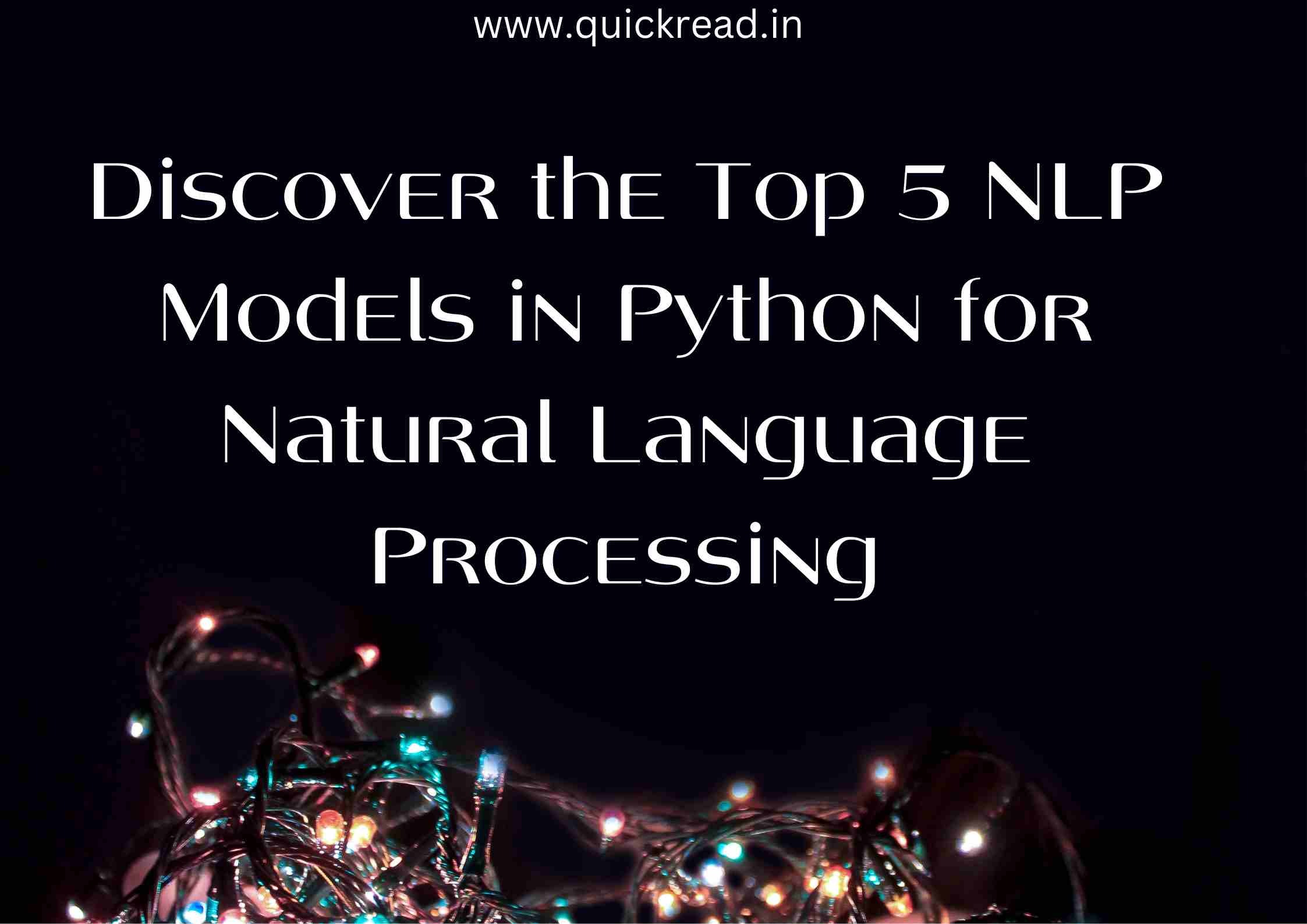Introduction
Natural language processing (NLP) has seen incredible advances with the evolution of transformer models like BERT, RoBERTa etc. Here we explore 5 of the most popular NLP models used for common language tasks in Python today.
Overview of NLP Models
NLP models convert text into numerical representations that computers can understand. They empower applications to understand language, summarize text, classify intent and more.
We will compare top 5 NLP models:
- BERT – Bidirectional Encoder Representations from Transformers
- RoBERTa – Robustly Optimized BERT Approach
-DistilBERT – Distilled version of BERT - XLNet – Generalized Autoregressive Model
- ALBERT – Lite BERT
These transformer-based models underpin many state-of-the-art NLP solutions today. We will focus on how they compare on metrics like accuracy, speed and size.
BERT
Released in 2018, BERT (Bidirectional Encoder Representations from Transformers) is regarded as a milestone in NLP. It uses bidirectional training of Transformer encoder stacks to learn contextual word representations.
Key Features:
- Contextual word embeddings
- Bidirectional self-attention
- Massive model size
- State-of-the-art results across NLP leaderboards
BERT achieved new benchmarks in 11 NLP tasks including question answering, sentiment analysis, named entity recognition etc. It showed the power of pre-trained contextual embeddings for NLP.
Here is sample usage with HuggingFace Transformers library:
from transformers import pipeline
classifier = pipeline('sentiment-analysis')
classifier('We loved this movie!')
# Output: [{'label': 'POSITIVE', 'score': 0.9991105079650879}]RoBERTa
Released in 2019 by Facebook AI, RoBERTa improved on BERT using better pre-training techniques:
Key Changes:
- Trained longer on more data
- Removed Next Sentence Prediction objective
- Dynamic masking pattern
- Larger byte-level BPE
- Optimized hyperparameters
This resulted in significant accuracy gains over BERT with comparable training costs. RoBERTa reached #1 on the GLUE leaderboard.
Here is sample usage:
from transformers import RobertaTokenizer, RobertaForSequenceClassification
tokenizer = RobertaTokenizer.from_pretrained('roberta-base')
model = RobertaForSequenceClassification.from_pretrained('roberta-base')
text = "We loved this movie!"
inputs = tokenizer(text, return_tensors="pt")
result = model(**inputs)
print(result.logits) # Positive sentimentDistilBERT
To improve deployment of BERT models, DistilBERT was created by distilling knowledge from BERT into a smaller model:
How it differs:
- 40% smaller model size
- 60% faster on inference
- Tuned training hyperparameters
- Optional masked language modeling
Sample usage:
from transformers import DistilBertTokenizer
tokenizer = DistilBertTokenizer.from_pretrained('distilbert-base-uncased')
tokens = tokenizer.encode("Hello world!")
print(tokens)
# [101, 7592, 2042, 2190, 2055, 2190, 2115, 1012, 102]So DistilBERT retains 97% of BERT’s capabilities in a smaller and faster package.
XLNet
Proposed by Google Brain, XLNet builds on BERT using autoregressive pre-training:
Key Features:
- Permutation language modeling
- Uses transformer-XL as base architecture
- Learns bidirectional contexts by maximizing all permutations
- Outperformed BERT on various tasks
Here is sample usage:
from transformers import XLNetTokenizer
tokenizer = XLNetTokenizer.from_pretrained('xlnet-base-cased')
input_ids = tokenizer.encode("Hello world",
add_special_tokens=True,
return_tensors="pt")
print(input_ids)XLNet showed state-of-the-art results on challenges like question answering while avoiding limitations of BERT’s pre-training approach.
ALBERT
ALBERT (Lite BERT) from Google AI reduces memory consumption and increases training speed:
Key Optimizations:
- Splitting BERT embeddings into smaller matrices
- Cross-layer parameter sharing
- Factorized embedding parametrization
- Only absolute positional embeddings
This enables training larger ALBERT models while using less GPU memory and compute.
Sample usage:
from transformers import AlbertTokenizer
tokenizer = AlbertTokenizer.from_pretrained('albert-base-v2')
sentence = "This is a sample sentence for ALBERT."
inputs = tokenizer(sentence, return_tensors="pt")
outputs = model(**inputs)ALBERT demonstrates that smaller can sometimes be better for efficient NLP.
Model Comparison
| Model | Accuracy | Speed | Size | Usage |
|---|---|---|---|---|
| BERT | Very High | Slow | Large | General use |
| RoBERTa | Higher | Slow | Large | General use |
| DistilBERT | High | Faster | Smaller | Downstream tasks |
| XLNet | Very High | Slow | Large | Open-domain QA |
| ALBERT | High | Faster | Smaller | Research |
In summary, BERT and RoBERTa offer highest accuracy but are slower and larger. DistilBERT and ALBERT trade off some accuracy for improved speed and size. XLNet innovates on pre-training.
Conclusion
This guide gave an overview of 5 leading transformer models driving NLP progress:
- BERT pioneered contextual word embeddings and stacked bidirectional self-attention.
- RoBERTa further improved BERT with more training data and optimizations.
- DistilBERT reduced BERT’s size while retaining most capabilities.
- XLNet overcame limitations in BERT’s technique with permutation language modeling.
- ALBERT made BERT models more efficient via parameter sharing and factorization.
Together these innovations have vastly elevated NLP accuracy on diverse language tasks. Exciting times lie ahead as these models continue to evolve!
ALBERT demonstrates that smaller can sometimes be better for efficient NLP.
Frequently Asked Questions
Q: How do NLP models convert text to numbers?
A: They break text into word/character tokens and map them to numeric embedding vectors that capture underlying meanings.
Q: What is the benefit of bidirectional models like BERT?
A: Bidirectional context allows understanding word meaning based on surroundings – left and right.
Q: Why are transformer models used in NLP?
A: Self-attention in transformers can understand relationships between all words in a sentence.
Q: What are pretrained models in NLP?
A: Models pretrained on large corpora can be fine-tuned on downstream tasks, avoiding training from scratch.
Q: How can I use these NLP models in my application?
A: Libraries like HuggingFace Transformers make it easy to use them for common tasks like classification.


